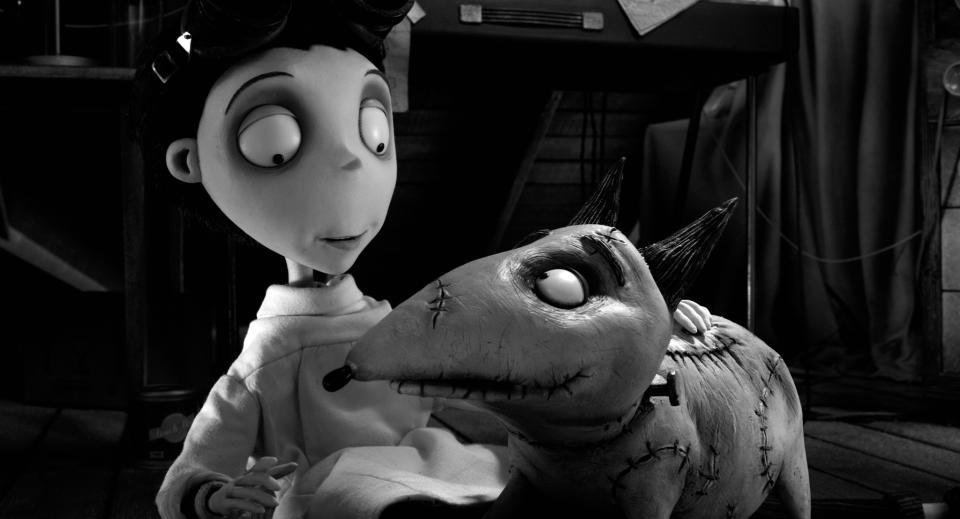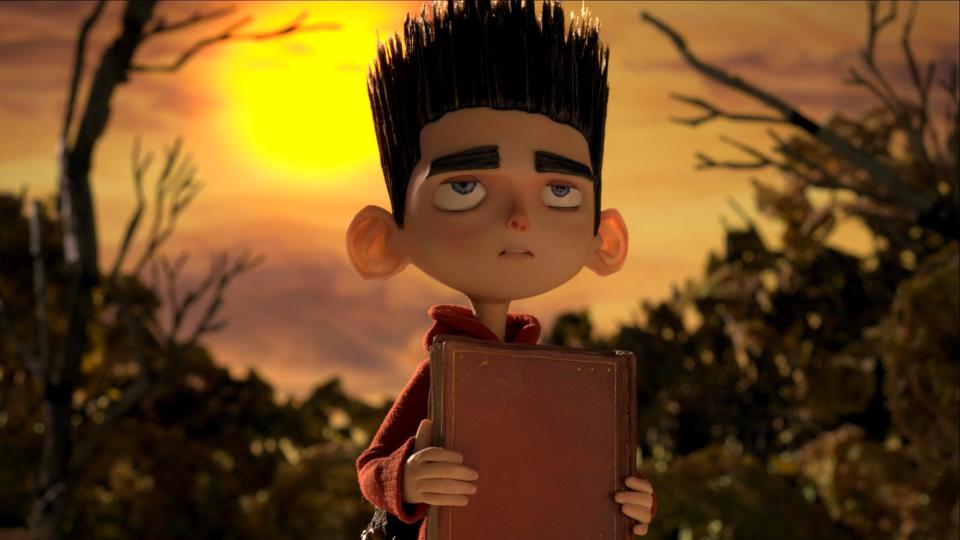'Frankenweenie' joins reanimation of stop-motion
LOS ANGELES (AP) — As far as Tim Burton's concerned, you can't keep a good dog down. And you can't keep a good, old-fashioned form of animation down, either.
Burton's boy-and-his-dead-dog tale "Frankenweenie" is Hollywood's latest resurrection of stop-motion animation, a century-old style that still creeps on to the big-screen now and then in an age of computer-generated cartoon blockbusters.
It's a simple concept — inanimate objects moved infinitesimally and photographed a frame at a time to create an illusion of motion. But with elaborate miniature sets and puppets whose innards are intricate gears to create movement and expression, it's a painstaking process requiring dozens of animation teams and years of work.
The result is something that looks like a loose, lumpy caricature of reality yet can feel more concrete and genuine than its slick computer-animated cousin.
"It's a more pure form, stop-motion," Burton said. "You try to put the form with the right story, and this one, just because you're reanimating something, there's something about moving a puppet that just works with that idea."
A feature-length version of Burton's 1984 live-action short film, "Frankenweenie" tells the story of a boy genius who pulls a Frankenstein and brings his beloved dog back to life after a car accident. Burton expanded the story to include a menagerie of resurrected monsters, including a were-rat, a mummy hamster and a Godzilla-like giant turtle.
Hollywood can go years without a stop-motion film, then deliver them in waves. "Frankenweenie" is the third one this year, following "ParaNorman," from the makers of 2009's stop-motion tale "Coraline," and "The Pirates! Band of Misfits," from Aardman Animations, the British outfit behind 2005's "Wallace & Gromit in the Curse of the Were-Rabbit," the only stop-motion cartoon to win the Academy Award for feature animation.
"Wallace & Gromit" came out the same year as Burton's "Corpse Bride," the filmmaker's second stop-motion flick after he revived the format with 1993's "The Nightmare Before Christmas."
Burton's ghoulish sensibilities — ghosts, goblins and other creatures from beyond — somehow make a nice fit for the slightly clunky, chunky stop-motion style. Along with "Coraline," ''ParaNorman" and "Curse of the Were-Rabbit," the upcoming stop-motion demon comedy "Hell & Back" also has an otherworldly bent.
"Stop-motion has always had a macabre side to it, and I think that goes back to the tradition of it as a medium. If you look at the people who really drove it forward early on in short films, they were animating bones and dead chickens, lord knows what else," said Chris Butler, who worked on "Corpse Bride" and "Coraline" and wrote and co-directed "ParaNorman."
"Then you have to always come back to 'Nightmare Before Christmas.' That set a tone, I think, for the whole thing."
Like "Frankenweenie," ''ParaNorman" is a story about reviving the dead, centering on a misfit boy whose ability to talk with ghosts makes him an unlikely hero after his town is besieged by zombies raised from their graves.
Stop-motion animators have been creating ghostly magic since the early years of cinema on such short films as 1907's "The Haunted Hotel," which showed a dinner being prepared by invisible hands.
In live-action movies, stop-motion was used to create dinosaurs in the silent adventure "The Lost World," the great ape of the original "King Kong" and fighting skeletons and other creatures in films from special-effects master Ray Harryhausen. James Cameron used stop-motion to animate the creepy metal endo-skeleton of his "Terminator" killing machine after its coating of Arnold Schwarzenegger flesh was burned away.
Stop-motion also has had a more family-friendly history with such TV favorites as "Gumby," ''Davey and Goliath" and "Rudolph the Red-Nosed Reindeer."
While two-dimensional hand-drawn animation that once ruled the cartoon world has mostly vanished on the big-screen, stop-motion's puppets and miniature sets are a natural in today's world of digital 3-D cinema.
"It's a great marriage," said "ParaNorman" co-director Sam Fell. "It's always been so tactile, stop-frame. I remember being young and watching Harryhausen. I always wanted to take one of those skeletons home and just reach in and touch the stuff inside. The 3-D just makes it even more tangible and invites you in even more. You become more immersed in the craft of it."
Along with digital 3-D photography, stop-motion films now are peppered with computer-animated visual effects to add to the spectacle.
Yet the basic idea is the same as it ever was.
"It's a guy behind a black curtain, pushing a puppet one frame at a time. So it really hasn't changed in a hundred years," said "Frankenweenie" producer Allison Abbate. "It's still embracing that old-school, handmade, handcrafted technology that I think you feel when you watch the movie. It feels like a labor of love, and you can see it on screen."






